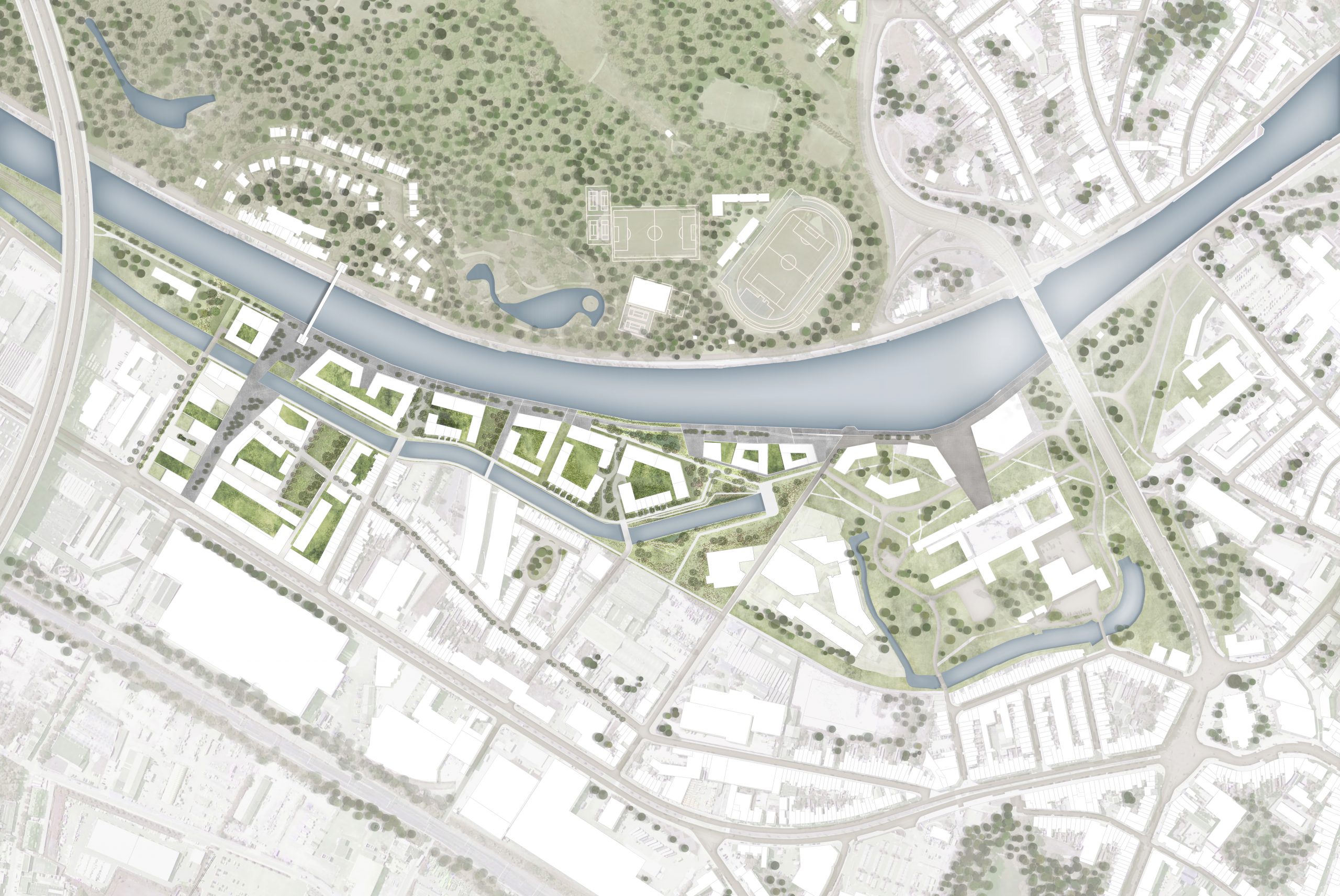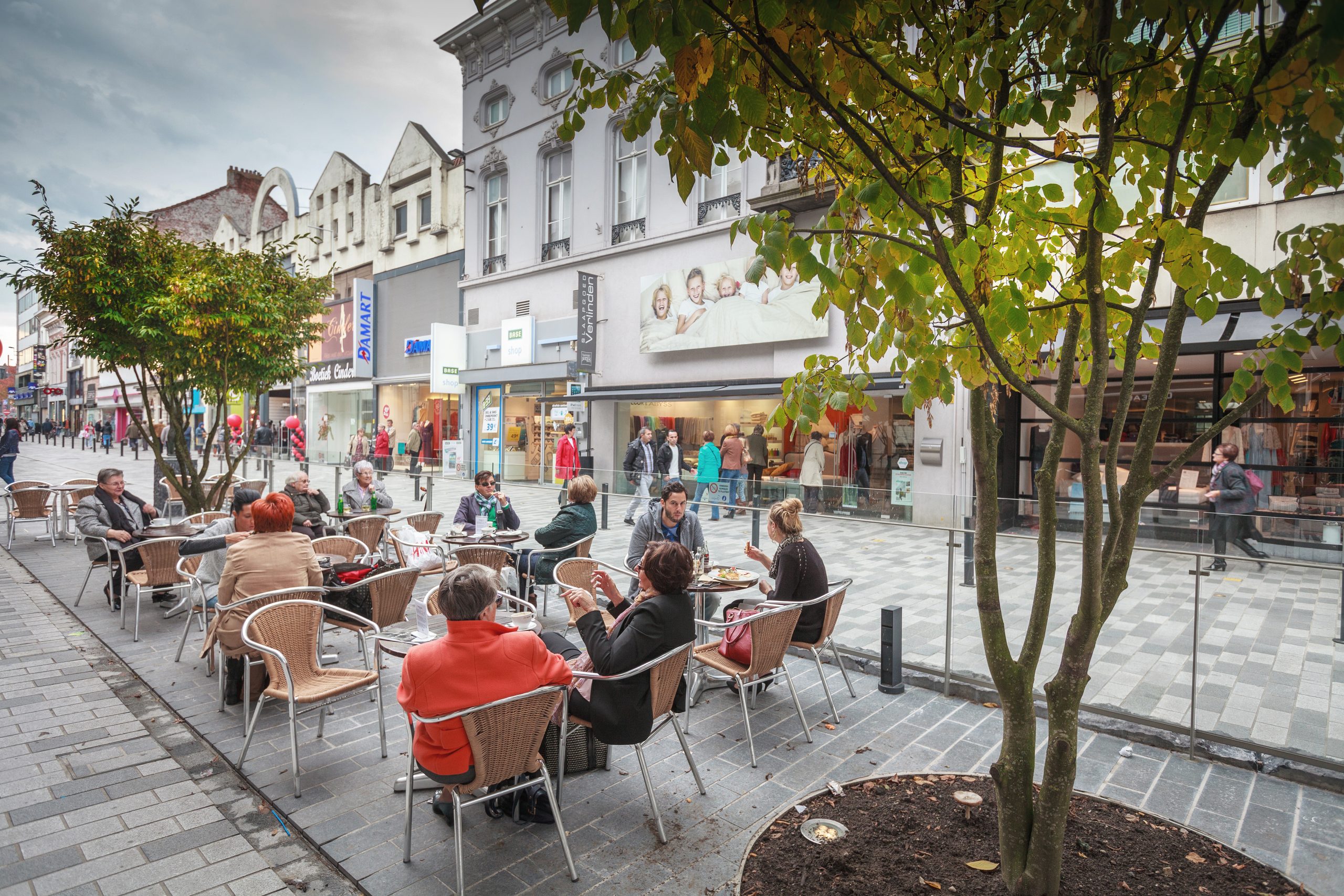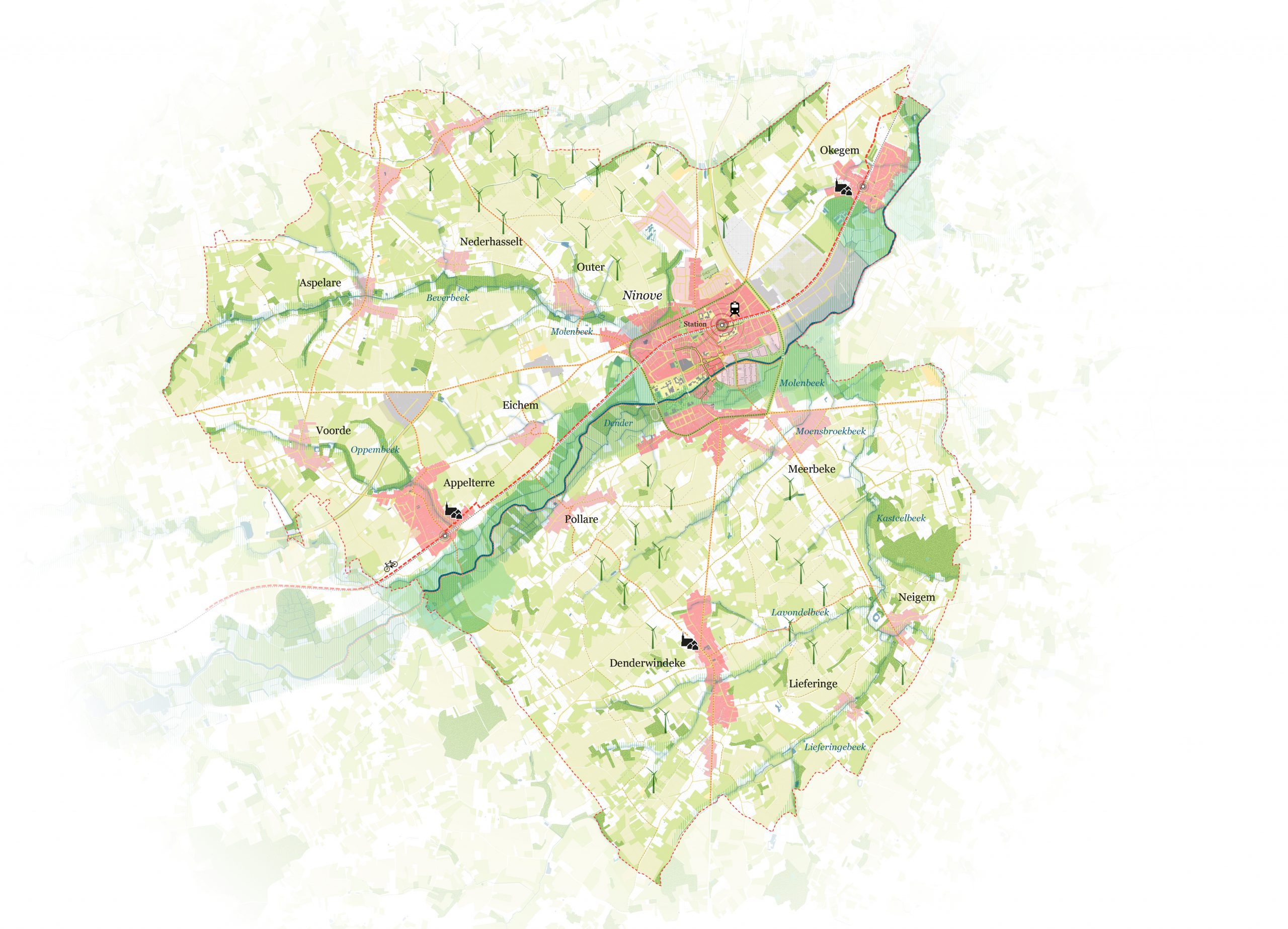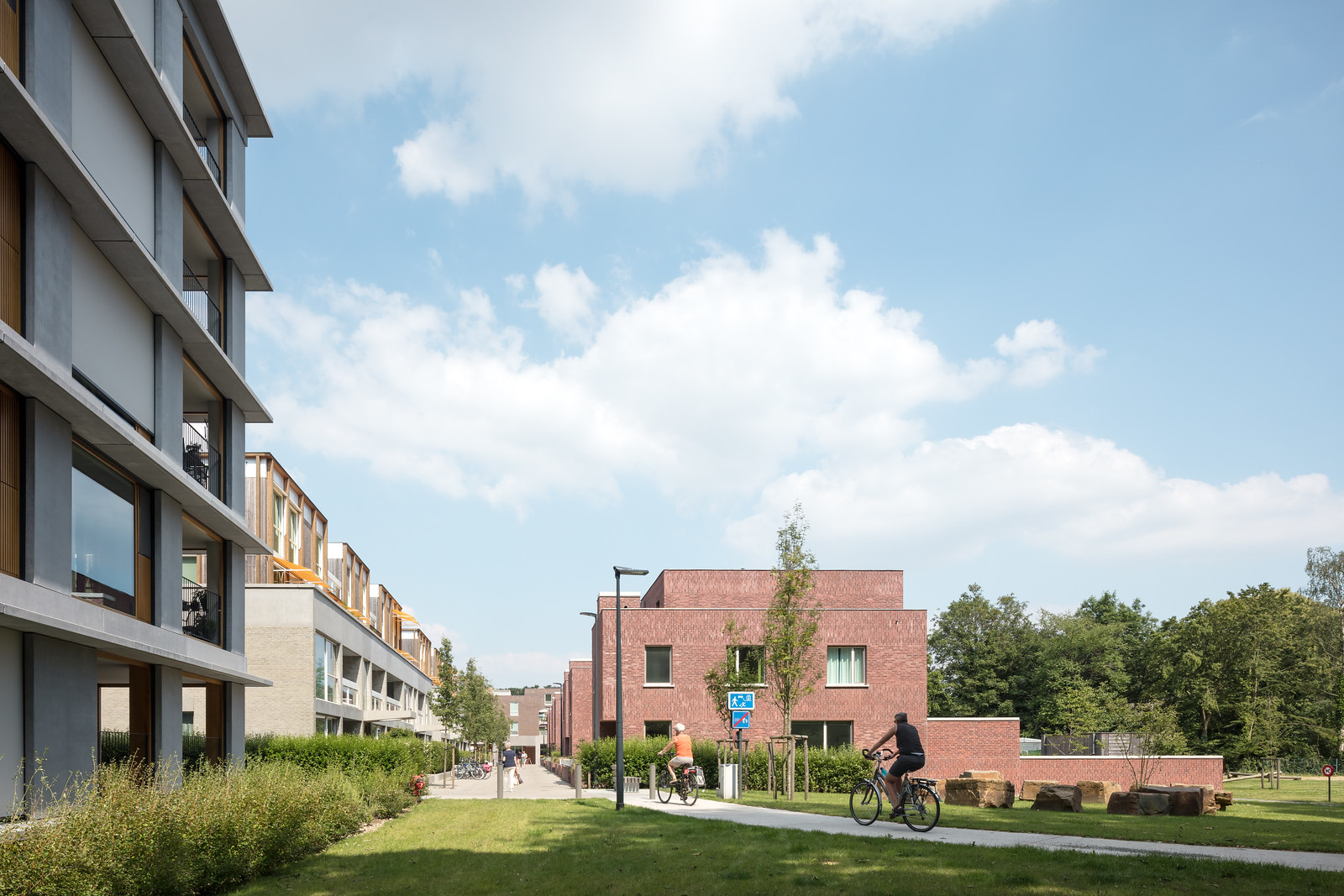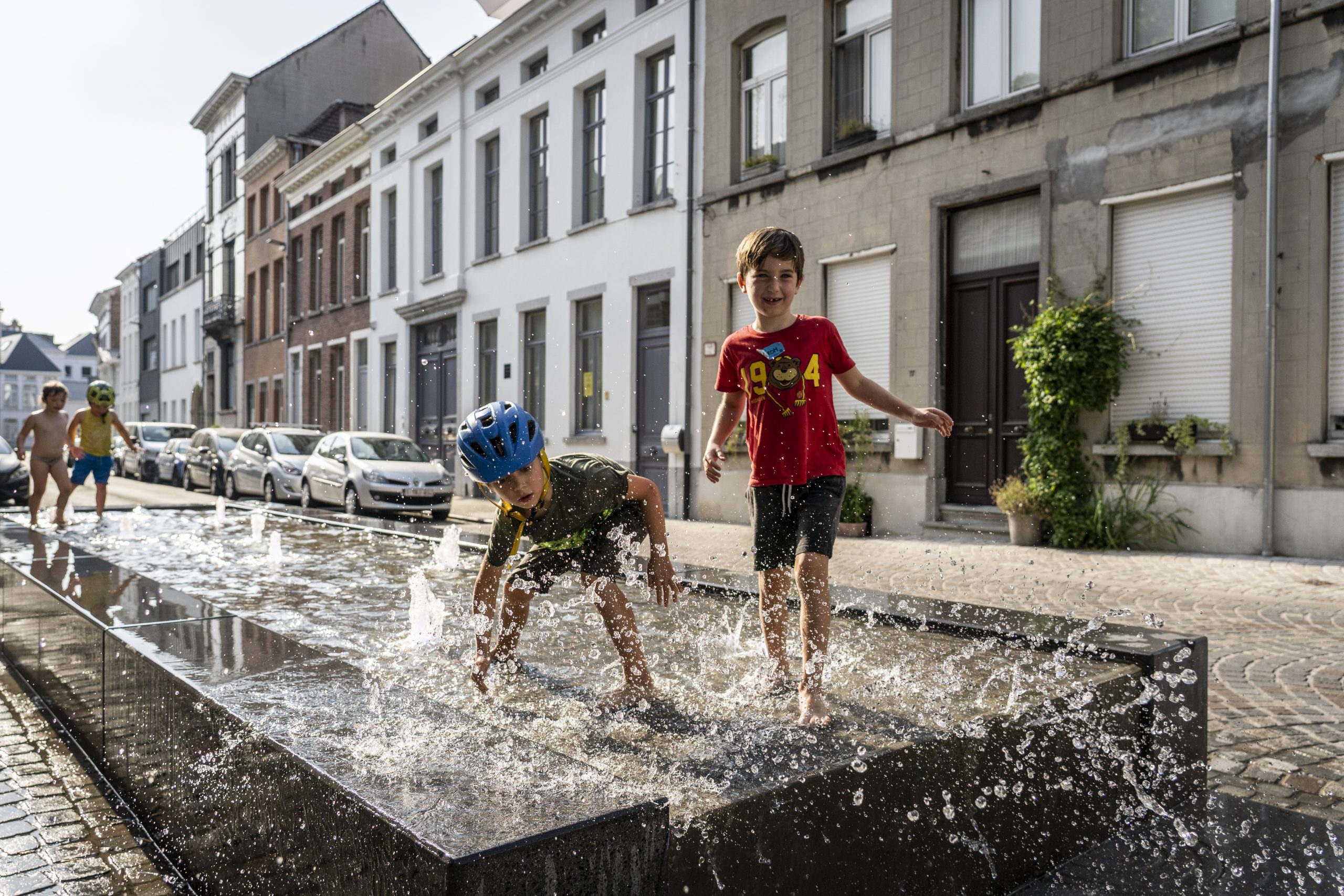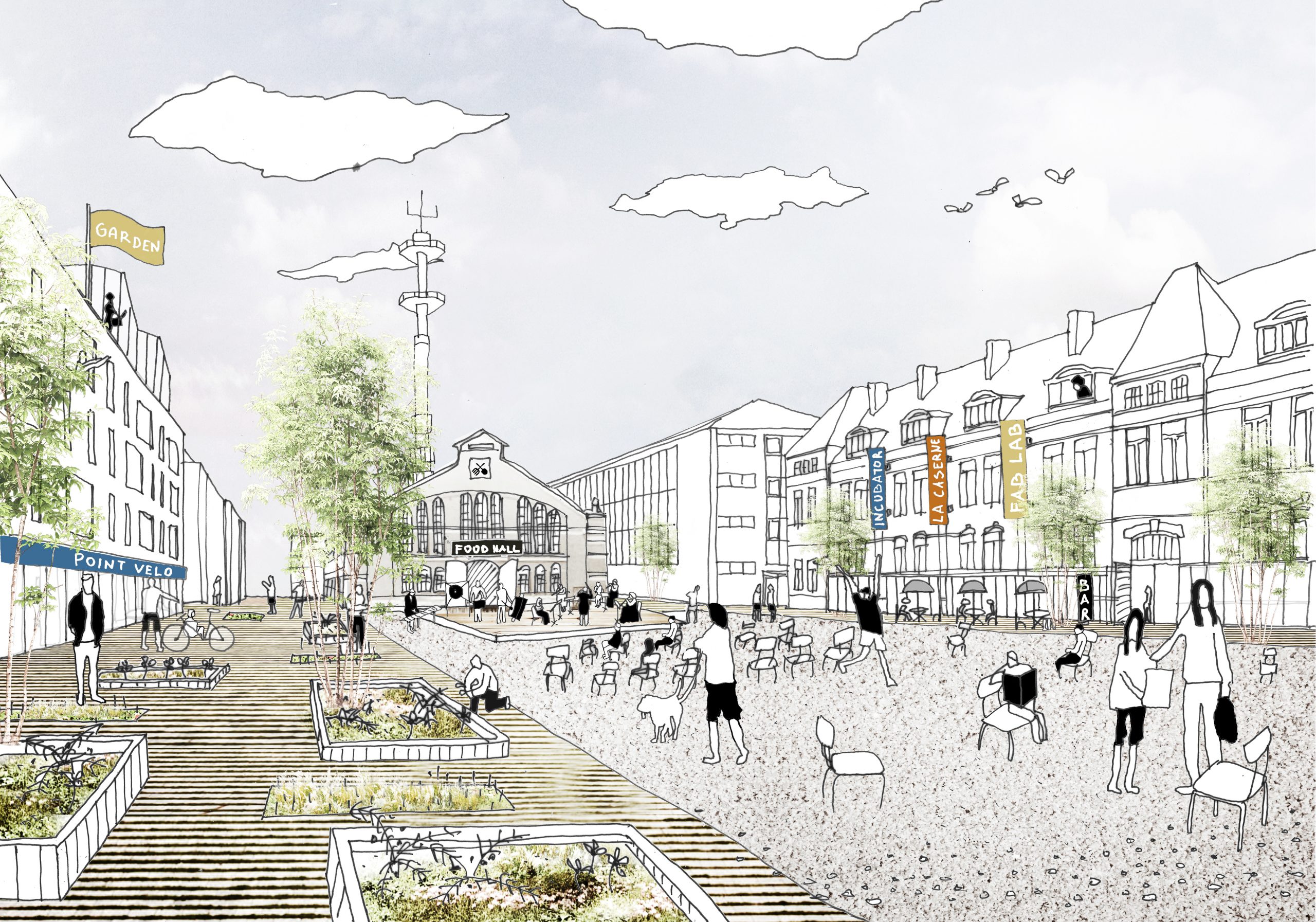Complex challenges for center
Centers are spaces par excellence where everything comes together: the mix of amenities, living and working, numerous activities that make things lively and interesting, open spaces that offer breathing room, a wealth of transport possibilities …
Moreover, each center fulfils its own role, depending on its size, location and function. This role defines the development perspective of a center and determines how we can work on resilience and quality of life. Access to sufficient, nearby public green spaces, appropriate care, basic amenities and a customized residential offer are crucial, as well as the harmonization of the center’s role within the broader network of centers.
In many centers in recent decades there has been a great deal of investment in livability, whereby maximum focus was placed on the housing function. However, recent developments have made us increasingly aware of the advantages of lively, active centers, where space is also preserved in the residential fabric for economic activities. In particular, they ensure vibrant neighborhoods and facilitate work-life proximity, thus favoring less and more sustainable travelling.
Tailor-made center reinforcement
For BUUR, center reinforcement has always been a priority, in which we see major opportunities for the sustainable development of space.
Centers constitute preferred living environments because of the proximity of amenities, the (potentially richer) social life and the broader possibilities for target group policy (the elderly, small families, young starters, lower-income families, etc.). Critical mass ensures a broader financial support base for amenities, trade and services, even in the smaller centers. The fact that everyday amenities are close at hand keeps mobility manageable: the infrastructure can be attuned to cyclists and pedestrians, and there is a greater potential for reliable public transport services.
However, we don’t regard growth as a matter of course. We only focus on growth that is tailored to the center, so that the most densely built-up parts or places with a pronounced identity do not come under pressure and the growth can actually lead to a quality improvement.
Carefully-tailored growth of the center entails that we also directly confront the question of who we are building for. We are struggling with a changing composition of the population and residential demand, and we are looking for new housing forms that respond to this evolution. BUUR designs and supports the local policy both in strategic densification projects with a great lever function, and for small-scale high-quality densification demands. Reinforcement of the centers also means reducing growth in undesirable places. That is no easy task, given that in many places still unused building land lies waiting. We are thus looking intently for ways to densify the centers while slowing further building in still-open spaces.

